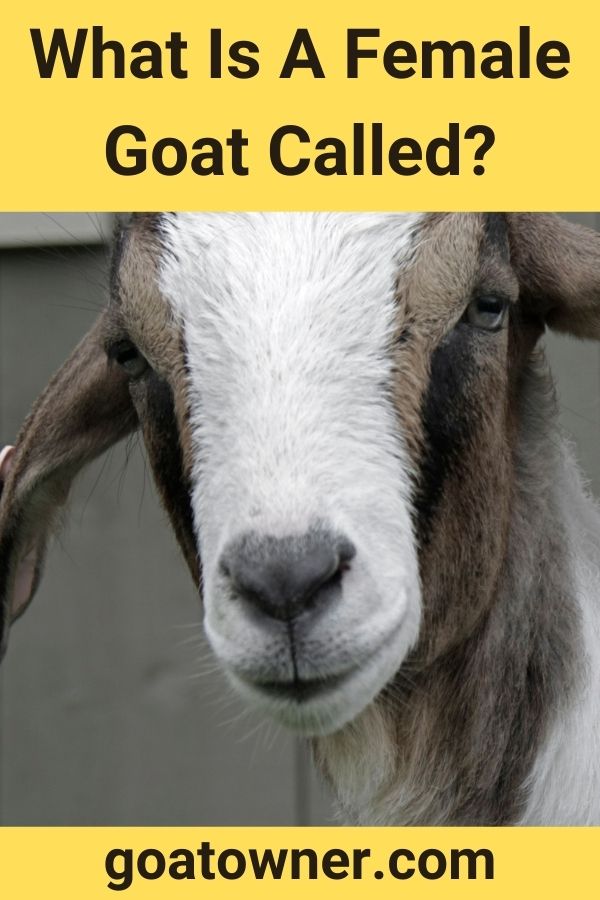I was having a conversation with some friends in the bar the other night, and we got talking about all the different names there are for different kinds of farm animals.
Each one seems to have a plethora of names to describe its sex, its age, its sexual maturity—pretty much everything about it.
We were all pretty much certain we were getting goats and sheep mixed up, and we couldn’t get the proper names right for any of them.
So, I decided to look into it and put the debate to rest.
So, what is a female goat called?
A female goat is called a doe or a nanny. Doe refers to any female that is not rearing young—nanny is a female goat that is actively rearing young. There are different terms to refer to female goats at different stages of their life, but the most important one to know is doe.
There is, then, a short answer and a long answer.
The average, ordinary female goat, that is not currently raising kids, is a doe.
If you are going to remember one piece of terminology, remember this one.
That said, it is useful to know all the other terms, as well—not to mention where they come from!
Let’s look further into it.
What is a mature female goat called?
A mature female goat is called a doe.
A mature female goat that is in the process of raising kids is a nanny—though she is only kidding up to the point that the kids are born.
She is not a nanny as soon as she is pregnant.
So, this is the only real distinction you need to be aware of when it comes to mature females.
Doe is really the much more common one, too—you won’t necessarily universally find ‘nanny’ in widespread use.
Many may simply refer to kid rearing females as does, too.
Female goats have much less variation in their names than males because of the lack of need to neuter them.
Doe is the most common and widely used, although there may be regional differences in many parts of the world.
After all, goats are one of the most widely raised livestock in the world.
So, where does our term ‘doe’ come from?
Where does ‘doe’ come from?
The word is Old English in origin, and actually comes from the same root—as in, referring to the same thing—as the word ‘buck’ for male goats.
In Old English, buc meant a male deer—da meant a female deer.
Because goats and deer are both ruminants, the name eventually came to be used to describe goats, too.
The precise origin of the Old English terms is, unfortunately, unknown.
This is almost always going to be the case with such terms—their origins simply stretch too far back into the past for us to know with any certainty.
What, then, is the name for a juvenile female goat?
Related – What is a male goat called?
What is a young female goat called?
If you’ve felt at all overwhelmed by the terminology so far, then you can relax—whether a goat is male or female, it is a kid when it is first born.
This is largely because there’s no real way of sexing them until they’re at least six months old.
If it were possible, there likely would be specific terms for new born females.
As it is, though, it’s perfectly fine to refer to them as kids no matter the sex, and as soon as they can be sexed, they become either a doe or a buck.
But males do have terms for whether or not they are neutered—why doesn’t this apply to females?
What is a non-neutered goat called?
A non-neutered female goat is still a doe—or possibly a nanny.
A non-neutered male is a buck.
We use the term wether to refer to a castrated male, but there is no such term for females.
This is because females are not routinely neutered at a young age.
The only reason this is done to males is to curb their aggressive tendency and disposition.
Females need to be fertile if they’re going to produce milk.
Finally, then—what about the term ewe?
How does that fit in?
Is a female goat a ewe?
Technically speaking, the term ewe does not fit into goats.
While some may informally refer to female goats as a ewe, really the only ‘correct’ terms are doe or nanny.
A ewe is a female sheep.
In formal settings, like a livestock auction, these terms are of course of vital importance, and there’s no space for even slight misinterpretations.
In informal settings, though, it’s unlikely that most would correct you on this fairly trivial point.
Goats and sheep are very, very similar, separated only by genus.
Much like many often refer to male goats as a ram, many also refer to a female goat as a ewe.
If we are speaking accurately, though, this is not correct.
A female goat is a doe or a nanny.
There is much less variation in the names of female goats because you generally don’t have to consider neutered females as well, as you do with males.
Neutering generally servers no purpose for female goats, so not only is it rarely done, but there is no need for a specific term for naming them.
The only sex specific terms you need to remember are doe and nanny—kid if it’s a juvenile.
Other than that, there’s not much to know!

